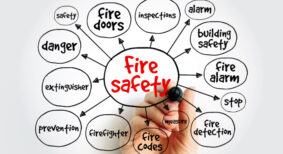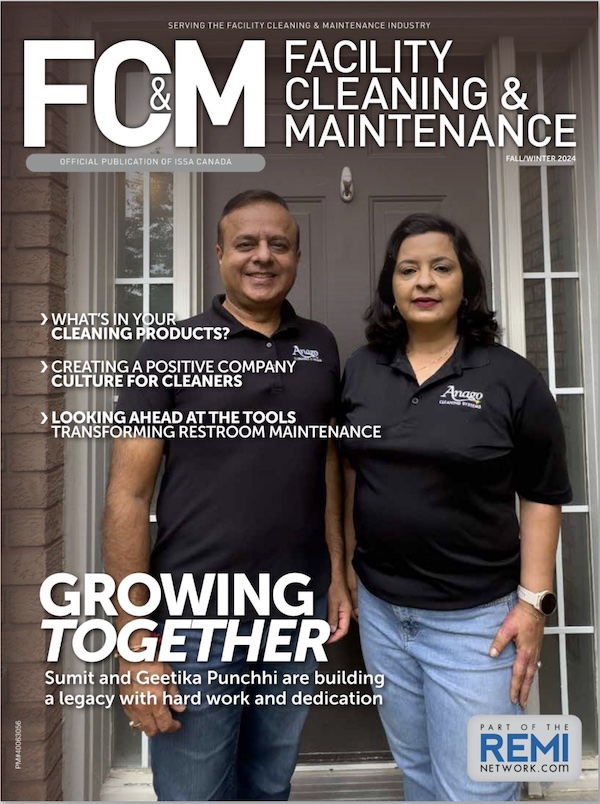Artificial Intelligence (AI) is expected to revolutionize the professional cleaning industry in silent yet significant ways. While robotic cleaning devices like vacuum cleaners, floor scrubbers, window washers, and disinfection systems have become commonplace in our industry, AI-powered cleaning systems, now being introduced, will offer far more innovation and sophisticated capabilities.
Unlike cleaning robots that follow pre-programmed routines, AI systems analyze data, make intelligent decisions, and suggest new cleaning routines. Further, with the use of sensors, these AI systems can talk to robotic cleaning systems, putting them to work where cleaning is needed.
Further, AI can determine optimal cleaning schedules, adjust cleaning frequencies based on facility usage patterns, and identify areas requiring much more or much less cleaning attention.
This innovative approach helps cleaning contractors and facility managers:
- Monitor and respond to actual cleaning needs in real time
- Adapt to changing occupancy levels in different areas of the facility
- Optimize resource allocation to improve cleaning efficiencies
- Reduce operational costs
To better understand what AI has in store for our industry, including helping to further green cleaning and sustainability, let’s delve into some of these AI applications. With a closer look, we will be able to see how AI benefits cleaning service providers and facility managers, enhancing their operations, the health of their facilities, and customer satisfaction.
Predicting cleaning needs with AI
Canada’s office vacancy rate stands at 18.7 per cent, matching U.S. levels, and is expected to hold steady through 2025. However, some regions of both countries may see their vacancy rates come down.
In areas where vacancy rates are coming down, AI systems can help optimize cleaning operations by:
- Analyzing and storing historical cleaning data to provide a benchmark for future cleaning operations
- Monitoring current building usage and foot traffic patterns
- Using sensors to automatically identify areas that need less frequent or more frequent cleaning, referred to as demand cleaning.
In other words, AI takes the guesswork out of cleaning, helping contractors and building managers maintain consistent cleanliness standards while demonstrating an elevated level of adaptability to changing occupancy patterns. The result is improved tenant satisfaction and more efficient and targeted cleaning services.
Resource management in facility cleaning
Labour costs dominate facility cleaning expenses, accounting for up to 90 per cent of total cleaning costs. This makes efficient resource management essential. AI technology enhances resource efficiency in three key ways:
The first is through demand-based cleaning mentioned earlier. This approach ensures the correct number of cleaners are working at the right times, preventing both costly overstaffing and service-damaging understaffing.
Second, AI works with the Internet of Things (IoT) sensors to enable real-time cleaning responses. When sensors detect areas needing additional attention, they can automatically deploy cleaning robots to address the issue.
Third, AI helps manage cleaning-supply inventory, which is particularly important for large facilities where supply costs are substantial. By analyzing historical and current usage data, AI can accurately predict which products are needed and in what quantities, minimizing waste and reducing costs.
Predictive maintenance
AI can evaluate the usage frequency of a cleaning machine and assist in forecasting when maintenance and repairs might be required. Traditionally, cleaning contractors faced uncertainty regarding potential machine breakdowns, often experiencing failures at critical times. AI helps eliminate this.
Predicting maintenance needs enables cost reduction, ensures uninterrupted cleaning operations, and increases the machine’s lifespan.
AI and custodial training
AI can significantly enhance worker training by creating customized and standardized training materials, including infographics, slides, and step-by-step text instructions.
Additionally, AI can develop videos, which have proven highly effective for teaching cleaning tasks. This leads to improved quality and consistency, benefiting facility managers and cleaning contractors.
Taking this a step further, some AI systems will become personal mentors, providing instructions not only on how to perform specific cleaning tasks but also provide support for individual cleaning workers. Learning is improved and workload is reduced for cleaning contractors and supervisors.
Steve Ashkin is CEO and founder of The Ashkin Group; an internationally recognized consulting firm working to Green the professional cleaning industry and help organizations implement effective and cost-effective sustainability programs. His commitment to Green Cleaning and sustainability is more than business, it is a passion, a calling, and a mission in life. He can be reached at SteveAshkin@AshkinGroup.com.









